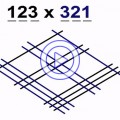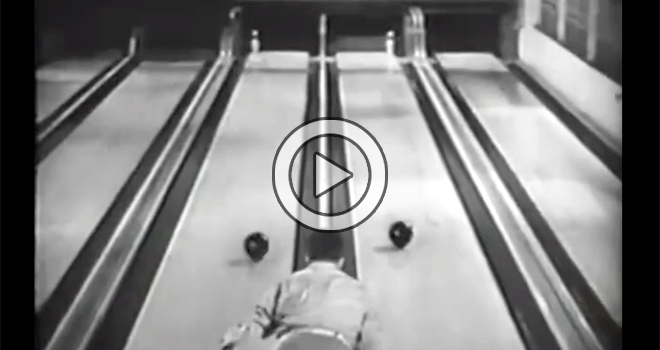In 1974, a young Professor of architecture in Budapest (Hungary) named Erno Rubik created an object that was not supposed to be possible. His solid cube twisted and turned – and still it did not break or fall apart. With colourful stickers on its sides, the Cube got scrambled and thus emerged the first “Rubik’s Cube”. It took well over a month for Erno to work out the solution to his puzzle. Little did he expect that Rubik’s Cube would become the world’s best-selling toy ever. As a teacher, Erno was always looking for new, more exciting ways to present information, so he used the Cube’s first model to help him explain to his students about spatial relationships.
Erno has always thought of the Cube primarily as an object of art, a mobile sculpture symbolizing stark contrasts of the human condition: bewildering problems and triumphant intelligence; simplicity and complexity; stability and dynamism; order and chaos.For this magic object to become the most popular toy in history a few chance meetings had to take place.
As with many of the world’s greatest inventions it did not have an easy birth. After presenting his prototype to his students and friends Erno began to realise the potential of his cube. The next step was to get it manufactured. The first cubes were made and distributed in Hungary by Politechnika. These early Cubes, marketed as “Magic Cubes” (or “Buvos Kocka”), were twice the weight of the ones available later. In the 70’s Hungary was part of the Communist regime behind the Iron Curtain, and any imports or exports where tightly controlled. How was Erno’s invention, that had become a major success in Hungary, going to make it into the hands of every child of the 80’s?
The first step in the Rubik’s Cube’s battle to worldwide recognition was to get out of Hungary. This was accomplished partly by the enchanted mathematicians who took the Cubes to international conferences and partly by an expat Hungarian entrepreneur who took the cube to the Nuremberg Toy Fair in 1979. It was at there that Tom Kremer, a toy specialist, agreed to sell it to the rest of the world. Tom’s unrelenting belief in the Cube finally resulted in the Ideal Toy Company taking on distribution of the “Magic Cube”. Ideal Toy’s executives thought that the name had overtones of witchcraft and after going through several possibilities the name: “Rubik’s Cube” was decided on, and the icon was born.
In the time since its international launch in 1980 an estimated 350 million Rubik’s Cubes have been sold. Approximately one in seven people alive have played with a Rubik’s Cube. This little six color cube has gone on to represent a decade. It has started art movements (Rubik Cubism); pop videos, Hollywood movies and even had its own TV show; it has come to represent both genius and confusion; it has birthed a sport (Speedcubing); and it has even been into space.
The beauty of the Rubik’s Cube is that when you look at a scrambled one, you know exactly what you need to do without instruction. Yet without instruction it is almost impossible to solve, making it one of the most infuriating and engaging inventions ever conceived.
“IF YOU ARE CURIOUS, YOU’LL FIND THE PUZZLES AROUND YOU. IF YOU ARE DETERMINED, YOU WILL SOLVE THEM. – ERNO RUBIK”
Source: rubiks.com
Related posts:
 SUGRU – Fix That Thing (Amazing Invention) – Video
SUGRU – Fix That Thing (Amazing Invention) – Video
 Japanese Use This Simple Method For All Calculations. And it’s AMAZING!!
Japanese Use This Simple Method For All Calculations. And it’s AMAZING!!
 National Anthem of Pakistan on Guitar and Rubab (Video)
National Anthem of Pakistan on Guitar and Rubab (Video)
 How to Build A “Stealth” Computer Display LCD Using Polarizing Glasses (Video)
How to Build A “Stealth” Computer Display LCD Using Polarizing Glasses (Video)
 20 Life-Changing Google Search Hacks (with Photos)
20 Life-Changing Google Search Hacks (with Photos)
 Top 16 Rarest, Most Expensive Materials in the World (with Photos)
Top 16 Rarest, Most Expensive Materials in the World (with Photos)
 Impressive Bowling Trick Shots by Andy Vera-Papa (Video)
Impressive Bowling Trick Shots by Andy Vera-Papa (Video)
 Most Amazing Wrist Watches in the World (Video)
Most Amazing Wrist Watches in the World (Video)
 Pearl of Karakoram, Rush Lake of Pakistan
Pearl of Karakoram, Rush Lake of Pakistan
 How to Win a Million Dollar Like a BOSS (Who Wants to be a Millionaire – John Carpenter) Video
How to Win a Million Dollar Like a BOSS (Who Wants to be a Millionaire – John Carpenter) Video
 13 Most Delicious Desi Food Items From Lahore
13 Most Delicious Desi Food Items From Lahore
 10 of the Most Haunted or Mysterious Places of Pakistan
10 of the Most Haunted or Mysterious Places of Pakistan



